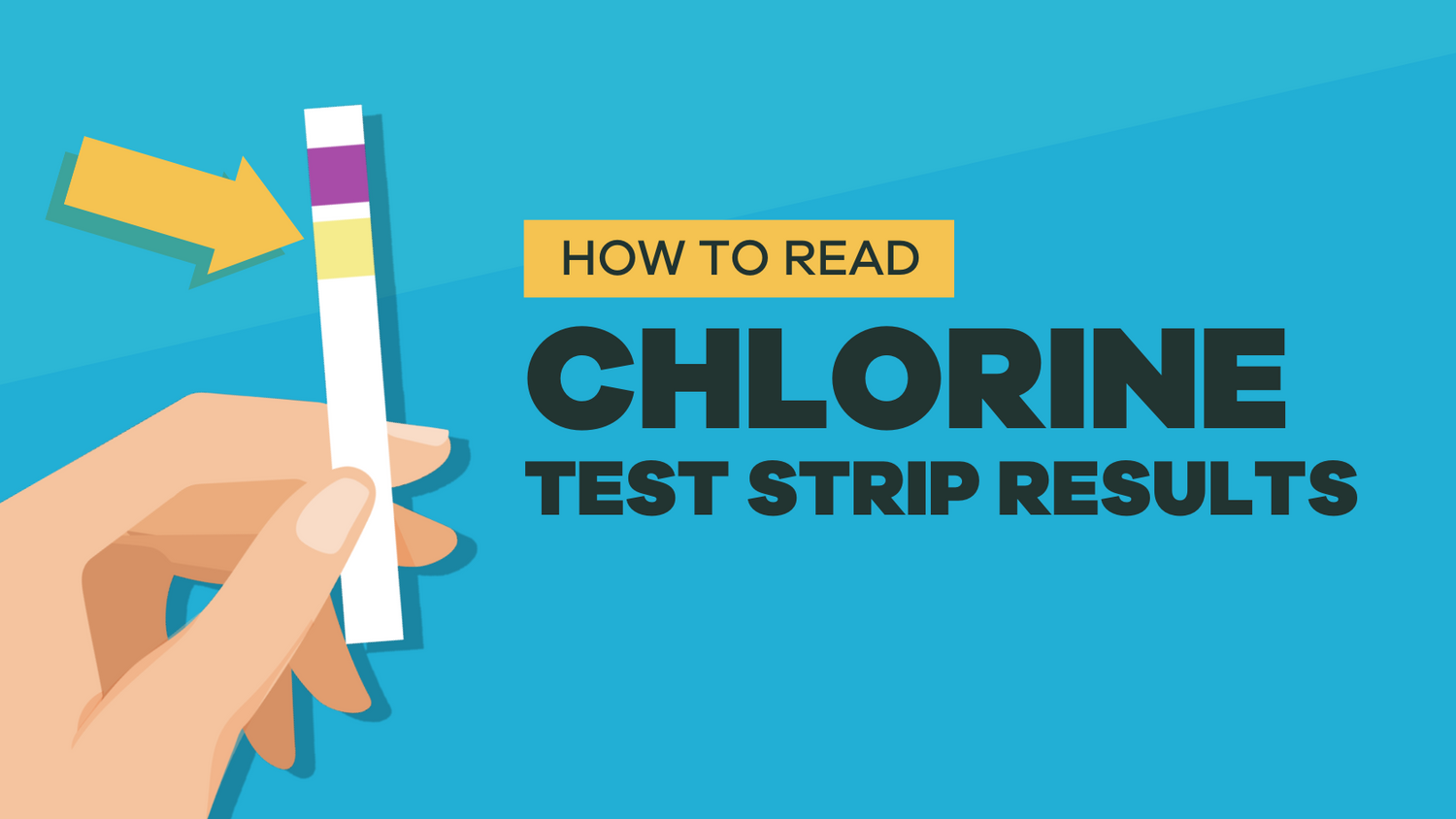
How to Read Chlorine Test Strips
Our blog is written by real experts— not AI. Each guide is carefully reviewed and updated based on the latest research. Plus, with no affiliate links, you can count on unbiased insights you can trust.
Chlorine test strips can quickly tell you how much chlorine is in a sample of water, but sometimes, understanding these seemingly simple results can be tricky.
How to interpret chlorine test strip results:
- 0 PPM: Not optimal
- Water with 0 PPM free chlorine will not be disinfected if new bacteria are introduced.
- 0.5 PPM: Optimal
- A free chlorine level of 0.5 PPM ensures water will remain bacteria free, even if new bacteria are introduced.
- 1 PPM: Good
- Ensures water will remain bacteria free, even if new bacteria are introduced.
- 2 PPM: Not optimal
- Once there is 2 PPM free chlorine present in water, it starts to have an unpleasant taste and odor.
- MORE THAN 2 PPM: Bad
- While chlorine in water isn’t considered dangerous until it reaches above 4 PPM, water with 2 PPM chlorine tastes and smells like chemicals. Further testing would be required to determine if chlorine content is above the 4 PPM threshold. Test your water
To better understand what test strip results mean, let’s take a look at two types of chlorine testing often included on a chlorine test strip: Total Chlorine and Free Chlorine.
Difference Between Total Chlorine and Free Chlorine
Most water treatment plants utilize chlorination, which involves adding chlorine to drinking water, as part of their disinfection process. When added in the right amounts, chlorine can effectively kill bacteria and prevent against future down-stream contamination.
During chlorination, chlorine is added to water and reacts with inorganic and organic materials to deactivate bacteria and kill microorganisms. The leftover chlorine that is not used to meet the chlorine demand is called total chlorine.
Total chlorine is made up of:
- Free Chlorine: leftover chlorine that is ready to deactivate bacteria
- Combined Chlorine: chlorine that has reacted with inorganic or organic molecules that can no longer deactivate bacteria. Your combined chlorine might include chloramine or disinfection byproducts called trihalomethanes.
Several trihalomethanes are carcinogenic. To know if your levels are higher than recommended drinking water standards you can test your water for total trihalomethanes in a certified lab. Test your water: Advanced City Water Test
What Do Chlorine Test Strips Measure?
Most chlorine test strips measure either free chlorine or both free chlorine and total chlorine. The amount of free chlorine present tells you whether or not the water is safe to drink.
Tap Score City Water Tests measure both.
What is a safe amount of chlorine in drinking water?
The optimal concentration of chlorine residual is between 0.3 PPM and 0.5 PPM.
Levels from 0.2 PPM- 4 PPM are considered acceptable.
What does PPM stand for on chlorine strips?
PPM means parts per million. This measurement is the mass of a chemical or contaminate per unit volume of water. PPM or mg/L (milligrams per liter) is the same thing.
What is a dangerous amount of chlorine in drinking water?
The EPA states that ingesting water with chlorine levels above 4 PPM can cause negative health impacts.
How Do I use my Tap Score chlorine testing strips?
Dip your strip into a glass of water (not your sampling container!) and move it back and forth for 30 seconds. Alternatively you can hold it under a stream of water for 10 seconds.
The pads will change color to indicate Total Chlorine (white pad on end) and Free Chlorine (yellow pad).
Hold your strip up to the chart to see your result. Estimate results fall between two color blocks.
Need more Chlorine Testing Strips?
Note: All Tap Score City Water Tests include chlorine testing strips.
Why do we test chlorine with testing strips instead of sending it to the lab?
Although most contaminants are best tested with high accuracy at a certified laboratory, chlorine is a rare exception to this rule. Chlorine is a volatile substance that can dissipate over time so sending a water sample to the lab may not accurately reflect the chlorine levels at the point of use.
However, chlorine-related contamination, like disinfection byproducts can only be tested at a lab.













